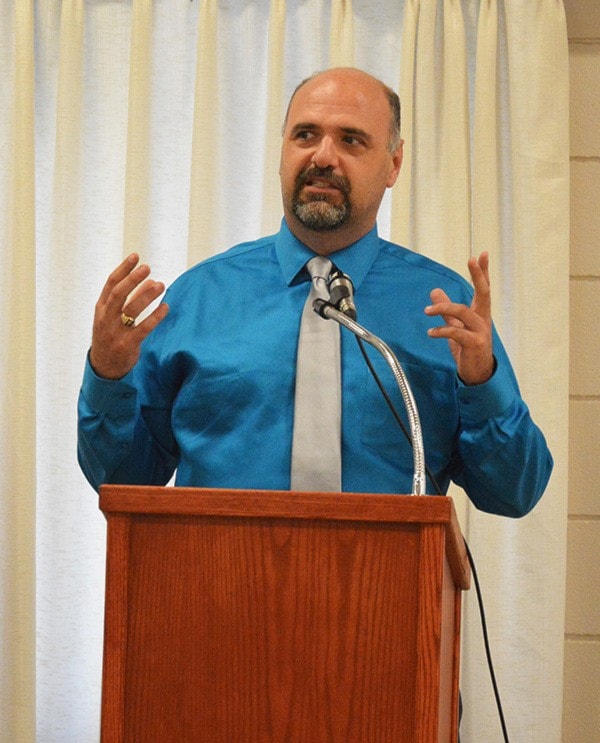The flurry of emergency personnel descending on Port Alberni as part of Exercise Coastal Response in the next few days should leave the region much more prepared to deal with a natural disaster, said Emergency Management BC exercise specialist Rob Dodds.
“What we’re looking at running is a provincial level exercise to test the immediate response plan for an earthquake in British Columbia,” said Dodds of the province’s $1.2 million tsunami and earthquake exercise taking place in Port Alberni from June 7–10.
The provincial and local governments held a kickoff reception at Echo Centre on June 6 to introduce those involved to the exercise. An emergency response plan had been developed last year but according to Dodds, a plan that’s untested isn’t nearly as helpful.
“The first thing that we find with a plan is that it’s great that it’s all written out but now we have to exercise it. The aim is to find out what actually works and if there are areas of improvement.” Port Alberni was chosen as a test case because of its history.
“The main reason was because of the 1964 Alaska earthquake,” said Dodds, adding that seeing an emergency plan developed up there that focused exclusively on the effects on Alaska made him realize Canada needed its own plan.
“We felt that Port Alberni would be the best place—they’ve experienced the most that we know of in the west coast and they have the tsunami warning system.”
The 1964 Alaska earthquake generated a tsunami that hit Port Alberni on Good Friday, causing the destruction of buildings and vehicles but no loss of life. Pacific Rim-Alberni MLA Scott Fraser hopes that Coastal Response will ensure that when another disaster strikes, lives will once again not be lost.
“It’s going to be about saving lives. Seconds and minutes count in a situation like this,” Fraser said, citing his experience as a petroleum firefighter. “Putting out a refinery fire was something we read about but until they sent us to training in Nevada where we actually had to put out refinery fires—they actually lit a refinery on fire and we had to put it out—that was the only thing that made it real.”
The threat of a tsunami is all too real to Tseshaht First Nations Coun. Hugh Braker.
“All of our reserves are located along the sea. Out of all of the thousands of Nuu-chah-nulth people who live on the west coast of Vancouver Island, the vast majority of them live less than three metres above sea level,” Braker said. Port Alberni residents would likely have 10 to 15 minutes to get above the tsunami inundation zone, he said—and that doesn’t include people living on the extreme west coast.
Braker remembers clearly the aftermath of the 1964 tsunami. “I was 11 at the time and I remember the day as vividly as if it were yesterday.
“We know that it’s going to happen again and we know that when it does happen it’s going to be you relying on me and me relying on you. It’s going to be the Alberni Valley that has to be on its own for a long, long time.”
Dodds said that Exercise Coastal Response will integrate close to 60 federal, provincial and local agencies in carrying out an emergency response.
“The aim is to find out what actually works and if there are areas of improvement,” he said. City of Port Alberni Coun. Denis Sauve said he was impressed by the level of integration of all facets of government, as well as other regional partners.
“This will be a great way for us to learn together, not only as the City of Port Alberni residents but our regional district, Aboriginal and west coast neighbours.”
reporter@albernivalleynews.com
